Learn how our program participants alleviate their symptoms with the right adjustments and regain more energy, well-being, and joy in life.
Menopause is a challenging time full of change for many women, and the symptoms are as diverse as the women themselves. Whether it's exhaustion, mood swings, weight gain, or hot flashes – every woman experiences perimenopause differently. With all the therapies, supplements, and self-help tips available, it's often difficult to keep track and figure out what really helps.
In this blog post, four women from the Hello Inside Menopause program share honest and candid stories about how they overcame their individual challenges. You'll learn which symptoms bothered them the most and which lifestyle adjustments finally brought them relief. Their stories show that there isn't one solution that fits everyone—but there are approaches that can work for each of us.
Get a closer look at how the therapy with natural lifestyle changes works and discover how you, too, can take small but effective steps toward well-being with continuous feedback from your body. Let's start with Sabine, whom we had the pleasure of interviewing after 12 weeks in the program.

"Oh, menopause: At first I thought my body had decided I needed a nap every day like a toddler."
Sabine suffered from fatigue and lack of energy - what coffee and late meals had to do with it
Fatigue is a part of everyday life for many women in perimenopause. Sabine is 47 and the mother of two teenagers. Her main problem was that she constantly felt exhausted. "It was as if my batteries were draining faster and faster, no matter how much I slept." Despite getting enough sleep, Sabine felt tired and listless during the day, which caused her problems at work and at home. Before the program, she took an iron supplement, but unfortunately, that didn't bring the desired improvement. So Sabine started the Hello Inside program to find out what was behind her fatigue.
"Of course, I didn't have much hope for improvement at the beginning, but honestly, I've wanted to try a CGM for a long time. It was probably a combination of curiosity and desperation that led me to the program. It's funny to realize that in retrospect!"
With the CGM (Continuous Glucose Monitoring) she was able to track live how certain foods, and in Sabine's case especially irregular meal times and coffee after 10 o'clock, affected her energy.
"I used to eat sugary snacks to get through the day, but the CGM showed me that after a brief spike, my blood sugar would plummet right back down. Now I eat high-fat and high-protein snacks (I've recently rediscovered nuts) that keep my blood sugar stable, and I really feel much better for it. Small cause, big effect for me."
How are hormone fluctuations and fatigue related?
During perimenopause, your estrogen levels drop, and progesterone fluctuates dramatically. These hormonal changes affect your body's ability to process blood sugar effectively. The result: blood sugar spikes and drops that make you tired.
Sabine sees these positive changes for herself: Sabine has learned to adjust her diet and incorporate regular exercise into her daily routine. "I now take short walks after eating, and that gives me a real energy boost. I feel more productive again and have the feeling I have better control over my body."

“ I often thought: If someone tells me again that these mood swings are completely normal, I'll freak out! ”
Anna suffered mainly from mood swings - stress eating and too little exercise were the last straw
Anna, 51, had been feeling like she was on an emotional roller coaster for some time.
"Sometimes I could cry at work without knowing why, and my schoolchildren often tell me that I'm irritable and impatient, which isn't usually my personality. It scares me that I'm no longer in control of my emotions."
Mood swings are common during perimenopause, often caused by the decline in estrogen and associated changes in the brain.
How do hormonal fluctuations affect your mood and why is it important to keep an eye on your blood sugar levels ?
Estrogen influences serotonin production, an important neurotransmitter that stabilizes your mood. During perimenopause, estrogen levels drop, and blood sugar fluctuations can exacerbate these mood swings, essentially being the last straw. Therefore, our program participants describe a good diet and exercise immediately after meals as a successful combination for mood swings during menopause.
What positive changes has Anna noticed in herself?
Anna began monitoring her blood sugar levels with CGM. She realized that stress and poorly balanced, sugary snacks were driving her blood sugar levels up, which subsequently negatively impacted her mood.
"I learned that after stressful situations, where I was already feeling unwell, I often ate something sweet too quickly. Thanks to the program's recommendations, I started eating high-fiber fruit with nuts instead, which has really helped me stay calmer and more balanced, and it hasn't been a real slump for me for a few weeks now. I still feel the fluctuations, but it no longer ends in a catastrophe like before, when I'd rather not go back to class at all after a few unpleasant situations."
"The second important takeaway is how important exercise is. I'm doing yoga regularly again now—it's doing me a lot of good mentally, too. I feel much more at peace with myself and am more relaxed in my interactions with my surroundings."

"My stomach used to be flat, but now it's a kind of 'menopause souvenir.' I was already exercising a lot, but the extra roll just wouldn't go away. And then the CGM tells me it's not just the burgers, but also my oh-so-healthy cereal. Great! Thanks, menopause."
For Claudia, it was her annoying weight that was bothering her and how exercise after lunch and no alcohol at dinner brought about a change
Claudia, 49, a sporty personal coach, was increasingly bothered by the fact that her figure had changed.
"I've always had curves, but also a great waist, which I tailored my wardrobe to. And yes, I always had to eat carefully and exercise to stay that way, but that was the case for a long time... Until it wasn't like that anymore: My belly got bigger, even though I didn't eat any differently than before. Exercise didn't help either, which really frustrated me, and with the sweating attacks, I often just felt uncomfortable and unattractive."
This is how hormone fluctuations affect your weight and why it is useful to monitor your blood sugar
Many women experience abdominal weight gain during perimenopause, a phenomenon often caused by hormonal changes and insulin resistance. Declining estrogen levels and the associated insulin resistance make it harder for your body to utilize sugar effectively. This leads to more fat accumulation, especially in the abdominal area. Using the CGM, Claudia was able to counteract this and identify which foods caused her blood sugar to spike.
"I didn't realize that even my whole-grain breakfast cereal quickly made me tired and hungry until I consciously focused on it again in the program. The CGM showed me that I often overeaten throughout the day after the high blood sugar spikes—classic cravings, in other words. Now I eat scrambled eggs and tomatoes, and I absolutely love it!"
Claudia has noticed these positive changes in herself: After just two months, she's almost managed to lose the weight she gained during early menopause. To maintain her ideal weight, she plans to use the CGM to continue monitoring her mealtime feedback, as she eats out a lot and can't rely on regular, tried-and-true meals at home. Since her last weight jump, she's also felt comfortable in her own skin again.
"I've learned through Hello Inside that walking from lunch to the next meeting and skipping heavy, alcoholic dinners works wonders for me. I feel much more active, fitter, and finally have my weight back in control. I also sweat less, I think, but that could just be my imagination... whatever, I'll take it!" she ends the interview with a mischievous laugh.

“You're lying peacefully in bed, and suddenly it feels like someone is shining a giant hot hairdryer on you - out of nowhere.”
Tina's heated nights of a different kind - abstaining from alcohol and having a heavy dinner also helped her to alleviate the symptoms
Tina, 52, suffered from tormented nights: "I woke up drenched in sweat several times, and the next day I felt completely exhausted." Hot flashes and night sweats are typical symptoms of perimenopause, often caused by declining estrogen levels, which disrupt temperature regulation. Fluctuating blood sugar levels can further intensify hot flashes and night sweats. The resulting lack of sleep, in turn, leads to increased stress and irregular blood sugar, which is the beginning of a downward spiral...
Thanks to the program, Tina discovered that her nighttime discomfort was often triggered by late meals and alcohol. "The feedback from the CGM helped me eat lighter in the evenings and avoid alcohol. This meant my blood sugar was much more stable at night and I had significantly fewer hot flashes almost immediately. I immediately noticed how much calmer my nights became, and after two days in a row, I almost forgot how bad I'd felt until I drank a lot of alcohol again at a neighbor's birthday party."




